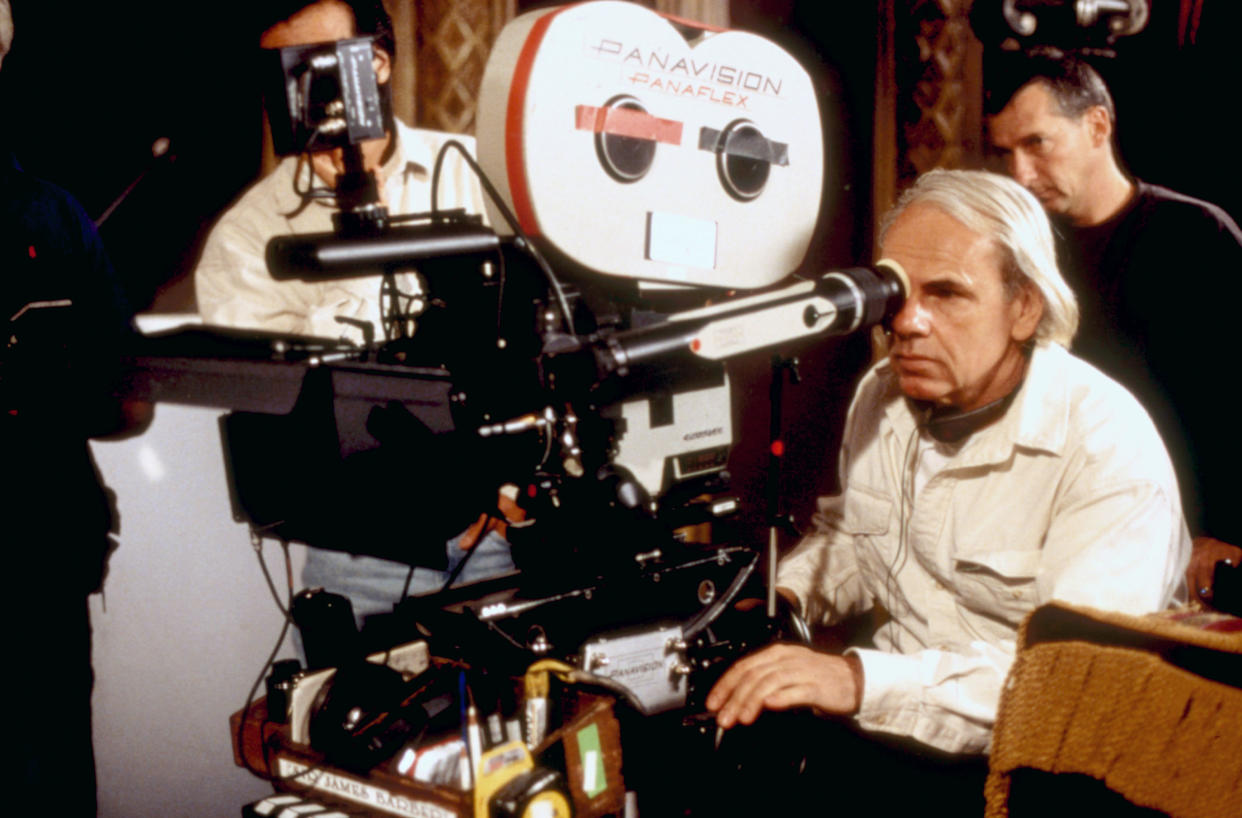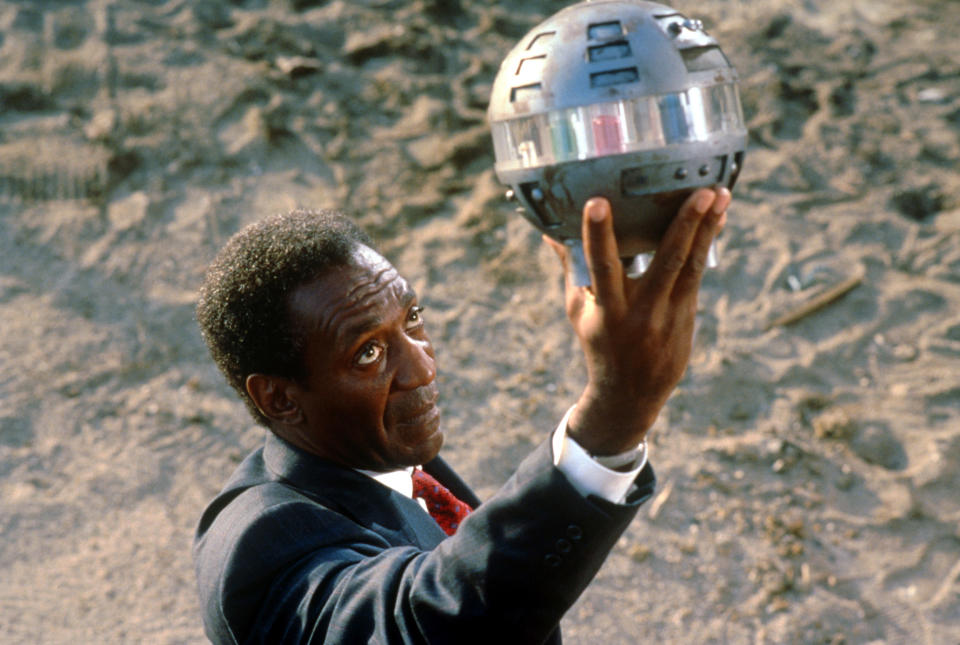Jan de Bont looks back at his scariest movies from 'The Haunting' to Bill Cosby's calamitous 'Leonard Part 6'

Sometimes you don’t have to be working on a horror movie to experience true terror. Just ask Jan de Bont, who survived a film shoot so frightening that it’s long since entered Hollywood infamy: the 1987 Bill Cosby “comedy,” Leonard Part 6. Cosby himself conceived, produced and starred in that misbegotten parody of spy movies, in which he played former CIA operative Leonard Parker, who is called back into service in order to stop an eccentric vegetarian (Gloria Foster) with plans for world domination.
At the time, de Bont was a recent transplant to Hollywood, having entered the film industry in his native Netherlands as a cinematographer who frequently collaborated with fellow Dutch filmmaker, Paul Verhoeven. After serving as the director of photography on such studio productions as All the Right Moves, Ruthless People and The Jewel of the Nile, he found himself on the Leonard Part Six set and could tell almost immediately that things were going to go very wrong. “The problem was that Bill Cosby had so much power, and could control so many things,” de Bont tells Yahoo Entertainment. “That limits how much you can do and what you can do.”

Cosby was certainly more powerful than the film’s director, Paul Weiland, and de Bont essentially saw the filmmaker cede control of the movie’s tone and comedy to his leading man. But Cosby didn’t bother directing anyone besides himself. “He saw the movie one way, and everybody else saw it different ways,” de Bont recalls. “You can’t do that; complete disagreement about the focus of a movie is totally destructive. And at a certain point, you can’t turn back or reshoot it. You’re just stuck. That was a pretty awful experience for all the people who worked on the crew, and it was sad to see it happen because they weren’t bad people. In the beginning, everyone tried so hard to make it work and do a great job, but it became a very depressing thing to work on.”
But Leonard Part 6 also served as a teachable moment for de Bont as he continued to work in the studio system, eventually graduating to the director’s chair with such ’90s blockbusters as Speed, Twister and The Haunting. The latter movie is newly available in time for Halloween on a Blu-ray edition that’s part of the Paramount Presents home entertainment line. Released in 1999, The Haunting — loosely based on Shirley Jackson’s classic novel, The Haunting of Hill House — also represents the culmination of his years of experience on the sets of actual horror movies and thrillers. De Bont walked us through some of the key titles in his filmography that led him up to the steps of Hill House.
Cujo (1983)
De Bont arrived in Hollywood in 1981 and worked on multiple productions before landing cinematographer duties on Lewis Teague’s 1983 adaptation of the Stephen King bestseller about a killer dog.
I have really good memories of Cujo. It was a low-budget movie, and I always feel that when you have very little money, you have to be incredibly inventive and come up with elements and shots that don't cost a fortune. That movie had a barn, a farmhouse and then some buildings around the city, but that was basically it! So how you do make that come alive and slowly change it in a way so there’s more to it than just a harmless barn and a harmless house? You do it by making something that looks normal, but slowly turns into something else.
I'm not a huge dog lover; I mean, I like small dogs, but not a gigantic dog like a St. Bernard! So I treated Cujo how the audience would look at him. He’s supposed to be a good dog, but he’s horrific in the movie. The camera always had to be at the height of the dog's eye, so you could see there was something going on in his head, but you didn't know exactly what it was. And I kept the camera handheld and a little bit low to the ground, like I was a little bit afraid of Cujo — which, to be honest, I was because he was a scary-looking dog.
I have to say that when Stephen [King] saw the movie, he loved it. He said, “This is the best movie ever made of my books.” Of course, that was a long time ago and many more movies have been made after that from his work. But he liked that it felt so real and so believable. And that, to me, is always the point. I like to show the audience where they are in the movie; I don't want them to ever have to guess, “What room are we in now?” Because all that guessing takes away attention from what I want them to see.
Flatliners (1990)
Seen today, Joel Schumacher’s thriller about med-school students who cross the threshold of death to visit the afterlife is so ’90s it hurts… in a good way. Featuring a cast that includes Kiefer Sutherland, Julia Roberts and Kevin Bacon, the movie has an eerily stylized visual sensibility that De Bont developed in concert with Schumacher.
A lot of that movie was about working with light; you see the light move in real-time faster than the action is in the foreground and that gives it a surreal quality. And the story is already so surreal that I thought it would help explain the mindsets the characters go through. I created and designed a lot of the light units in the movie; all those fixtures you see, I designed myself and they’re positioned in such a way that they have meaning. And that light ultimately leads to the end of the movie where [Sutherland’s character, Nelson] falls from the tree and there’s this incredible light going on.
For me, lighting is not only about intensity, but also color, because colors set moods in a film; you can direct the audience with color. Joel had so much confidence in me that he totally let me play with that. He always said, “Oh, try some more!” It’s fun to be able to do that as a director of photography. I don't want to sound like a cliché, but it's like what painters do with colors. If they want to create a certain feel, they pick particular colors and avoid others.
Speed and Twister (1994 and 1996)
De Bont made the leap to the director’s chair with two of the defining action spectacles of the 1990s. Speed was a stripped-down “bomb on a bus” movie that relied heavily on practical effects, while Twister embraced computer technology as it sent stars Bill Paxton and Helen Hunt chasing after wild tornados that launched cars, cows and people into the air. Both movies gave him the chance to put big stars in big stunts, creating thrills and chills for moviegoers.
Keanu wasn't an action star at the time we made Speed, and he really didn't like action or wanted to participate in the action. Many actors are afraid of that, but I was able to convince him that whatever happens in the movie, he really should try to do it himself. Of course, we always made it safe, and if there was a stunt that looked dangerous, I would always try it out myself first to show that it was OK. What’s important about those moments is that there's no acting involved. When you have to jump from car to car at high speed, for instance, the reaction you have on your face is a real reaction and therefore it's so much better. You can see the adrenaline that creates right away in your face. And once it's done, you’re like, "I did that, and that was really cool!” What you don’t realize is that it’s even cooler for the camera because you respond to the moment in a way that’s so much better than if you just had to act it.
On Twister, there’s that sequence when Bill and Helen are in the car when it starts hailing, and that was real hail. I said, “I don’t think we should do this with you, because we can’t control the size of the hail.” But Bill said, “No, I really want to feel it.” Of course, he got hit by a big block of ice and started to bleed! But he said, “Don’t stop, keep going.” So you do have to be careful that it doesn’t go too far with that adrenaline feeling. Actors can get addicted to it, and that’s not so good either. You have to find the right balance between the two.
The Haunting (1999)
De Bont’s version of The Haunting of Hill House fuses horror and action by turning the titular haunted house into a fun house of spooky set pieces that mix practical and digital effects.
With Twister, the effects on the movie were so complex and F/X companies at the time weren’t ready for it. Software actually had to be designed to make certain things possible. So for The Haunting, I already knew there were a lot of things we couldn’t do yet, and because of that, I knew the house had to be as much a character as the actors in the movie. So we built the house like you would build a stage set for an opera. It was huge — you could turn around 360 degrees and see rooms and hallways. One of the sets was so big that no soundstage in L.A. could house it! The only place available that was big enough was the Queen Mary Dome that was built for Howard Hughes’s giant plane, the Spruce Goose. So that set was built there, and we built the others in other places.
I wanted the actors and the audience to be overwhelmed by the space — it’s so gigantic that it’s almost grotesque and presses down on them. This wasn’t going to be the type of horror movie where the characters say, “Don’t go down those stairs.” They don’t realize until halfway through the movie that strange things are happening, and that the rooms are coming alive. Because it was a practical set, that staircase could be rigged to fall apart underneath you. I didn't dare to walk on that goddamn staircase because it started to shake after the first step! I’m scared of heights, so that's the one time I did not show the actors how to do a stunt. I was like, “You’ll find out on your own.”
The thing you have to know about The Haunting is that there were a lot of copyright issues with the first movie. [Robert Wise directed a celebrated 1963 adaptation starring Julie Harris and Claire Bloom.] So we could use the book, but not the film, which was hard because both the book and the film were more of a drama, whereas ours is a kind of scary fairy tale. I haven’t seen Netflix’s Haunting of Hill House; there’s just so much to see now and I’m so far behind. But I bet they didn’t have a set like ours!
The Paramount Presents Blu-ray edition of The Haunting is currently available at Amazon and Best Buy.
Read more from Yahoo Entertainment


